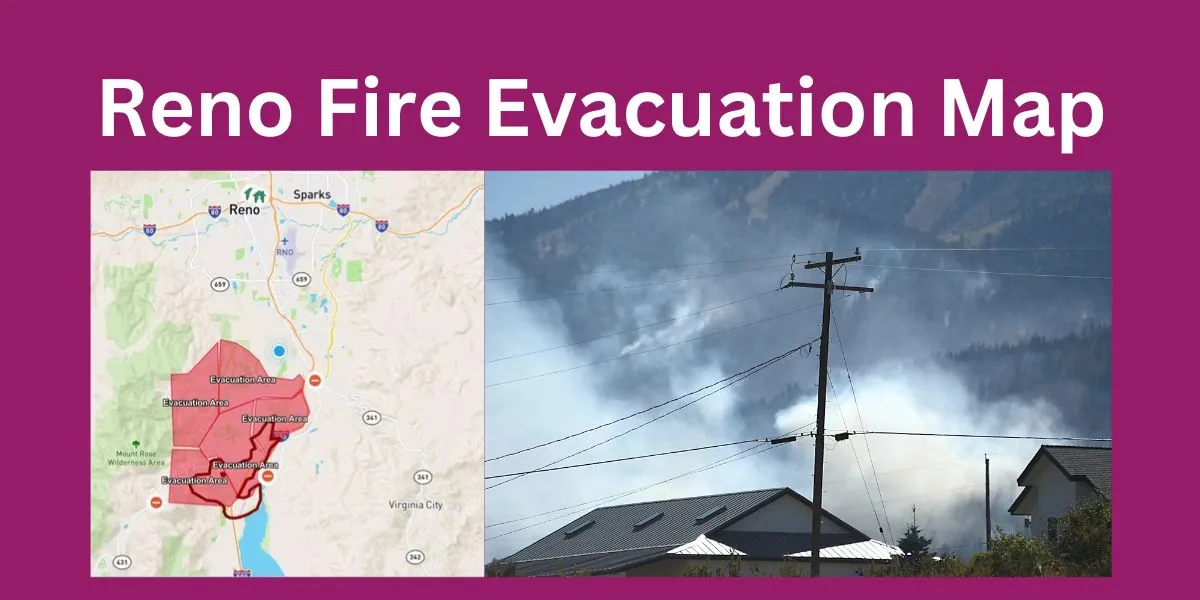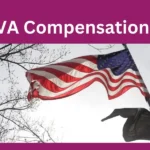Wildfires are no strangers to Nevada, and if you’re in Reno or its surrounding areas, knowing your fire evacuation routes can make all the difference. An evacuation map might seem like just another chart to glance at, but in emergencies, it can be your lifeline. Let’s explore everything you need to know about the Reno fire evacuation map, from understanding evacuation zones to tips on how to stay prepared for any wildfire situation.
Why Is a Fire Evacuation Map Important?
Having a fire evacuation map specifically for Reno helps locals and visitors alike understand the safest, quickest routes out of danger. When wildfires spread fast, you don’t want to be scrambling to find exits or plan routes on the fly. A map provides you with essential information, including which areas are the highest-risk zones and what escape routes are accessible at any given time.
How to Read the Reno Fire Evacuation Map
Breaking Down Evacuation Zones
Most fire evacuation maps, including Reno’s, are divided into various zones. Each zone is color-coded to show risk levels. Here’s how to read them:
- Red Zones: Areas under immediate threat where evacuation is mandatory.
- Yellow Zones: Areas on high alert for possible evacuation.
- Green Zones: Safe zones where no immediate threat is expected.
Understanding Road Closures and Safe Routes
Evacuation maps often detail road closures to help you find the safest way out. Check for marked roads that lead to safe zones, as well as alternative routes in case primary roads become blocked.
Where to Access the Reno Fire Evacuation Map
Online Resources for Real-Time Map Updates
The easiest way to access the Reno fire evacuation map is online. The local government and the Reno Fire Department often update their websites with real-time evacuation maps. Bookmark these websites or download their apps so you can check the map on your phone if you ever need to leave quickly.
Physical Map Options for Backup
For those who prefer a more traditional approach, physical maps can be a great backup. You can usually pick them up from fire stations or community centers, especially during high-risk seasons. These maps might not be updated in real-time, but they provide a good overview of the main evacuation routes.
When Should You Evacuate?
Knowing the Warning Stages
Evacuating too early can be inconvenient, while waiting too long can be dangerous. Here’s a quick guide:
- Red Flag Warnings: These warnings indicate that wildfire conditions are optimal, but it’s not yet time to evacuate.
- Evacuation Warning: Authorities may issue a “get ready” message, advising residents to be prepared for a possible evacuation.
- Evacuation Order: At this stage, evacuation is mandatory, and everyone in the area must leave immediately.
Factors to Consider When Deciding to Evacuate
Apart from official warnings, keep in mind that smoke levels, weather conditions, and how close the fire is can all impact your decision. If you feel unsafe, don’t hesitate to leave even if an evacuation order hasn’t been issued yet.
How to Stay Prepared with the Reno Fire Evacuation Map
Creating a Family Evacuation Plan
Everyone in your household should know the evacuation plan. Choose multiple meeting spots outside of the danger zones, and designate roles if necessary. Practice evacuation drills so everyone is familiar with the process.
Packing a Go-Bag
Your go-bag should include essentials like water, food, first-aid supplies, medications, important documents, and the evacuation map. Store it in an easily accessible spot, so you’re ready to go at a moment’s notice.
Evacuation Routes and Shelter Options in Reno
Major Evacuation Routes in Reno
Knowing the major evacuation routes can significantly reduce confusion during an emergency. Some key routes in Reno include:
- Interstate 80 (I-80): Running east-west, it’s one of the main highways for quick evacuation.
- Highway 395: Leading north-south, this is another key route to consider.
- Virginia Street: A well-known local road that can serve as an alternative exit.
Finding Shelters and Temporary Housing
During wildfire evacuations, shelters often pop up in designated safe zones like community centers, schools, and churches. You can locate these shelters on the evacuation map, or check local news and government announcements for specific information on available shelters.
Tips for Staying Safe During a Fire Evacuation
Keep Your Phone Charged
Your phone will be your main source of real-time updates, so keep it fully charged. Carry a portable charger in case of power outages or an extended evacuation.
Stay Informed with Local News Sources
Local news stations, social media, and emergency radio channels provide critical updates. Don’t rely solely on the map; tune into local broadcasts for live updates on fire progress and evacuation notices.
What to Do if You’re Caught in a Fire Zone
Stay Low and Protect Your Airways
Smoke rises, so staying low to the ground helps you avoid breathing in too much smoke. Cover your nose and mouth with a wet cloth if possible.
Find a Clearing or Non-Flammable Spot
If you can’t evacuate immediately, find a spot that’s clear of vegetation and other flammable materials. Wait for emergency responders to guide you out if it’s safe.
What Happens After Evacuation?
Returning Home Safely
Returning home after an evacuation isn’t as simple as walking back through the front door. Here’s what you should do:
- Check for Damage: Look for structural damages or burnt areas around your home.
- Air Out Your Home: If there was significant smoke in the area, open windows and doors to ventilate your house.
- Dispose of Contaminated Items: Get rid of food, water, or other items that may have been affected by smoke or fire.
Mental Health Considerations
Going through a wildfire can be traumatic. Reach out for mental health support if you need it, and encourage others in your household to do the same.
Tools and Apps for Fire Safety in Reno
Emergency Alert Apps
Many apps can alert you of an approaching wildfire. Download apps like FEMA, Red Cross Emergency, or MyRadar for real-time alerts.
Local Social Media Groups
Social media groups can keep you connected with the Reno community for on-the-ground updates and tips. Often, residents will share personal experiences and real-time information that can be invaluable.
Practice Fire Drills: A Simple Yet Essential Step
Familiarize yourself with the map and practice your routes. Fire drills might feel unnecessary, but when an actual evacuation is underway, this muscle memory can be a lifesaver.
Conclusion
Wildfires are an unfortunate reality in Reno, but by knowing your evacuation zones, routes, and staying prepared, you’re taking a major step in keeping yourself and your loved ones safe. Keep an eye on the Reno fire evacuation map, make use of emergency alerts, and always have a plan in place. Preparedness is your best defense—so stay vigilant and ready.
FAQs
1. Where can I find the latest Reno fire evacuation map?
You can find the most updated evacuation map on the Reno Fire Department’s website or through local government emergency management portals.
2. What should I pack in a go-bag for wildfire evacuation?
Pack essentials such as water, non-perishable food, medications, first-aid supplies, important documents, and a physical copy of the evacuation map.
3. How do I know if my area is under an evacuation order?
Stay tuned to local news, emergency alerts, and official social media channels for real-time updates on evacuation orders.
4. Is it safe to return home immediately after the evacuation order is lifted?
Not always. Wait for official confirmation that it’s safe and check for any structural damage, smoke contamination, or fire residue.
5. Can I rely solely on my phone for navigation during an evacuation?
It’s best to have a backup plan, like a printed map, in case your phone loses battery or signal.










